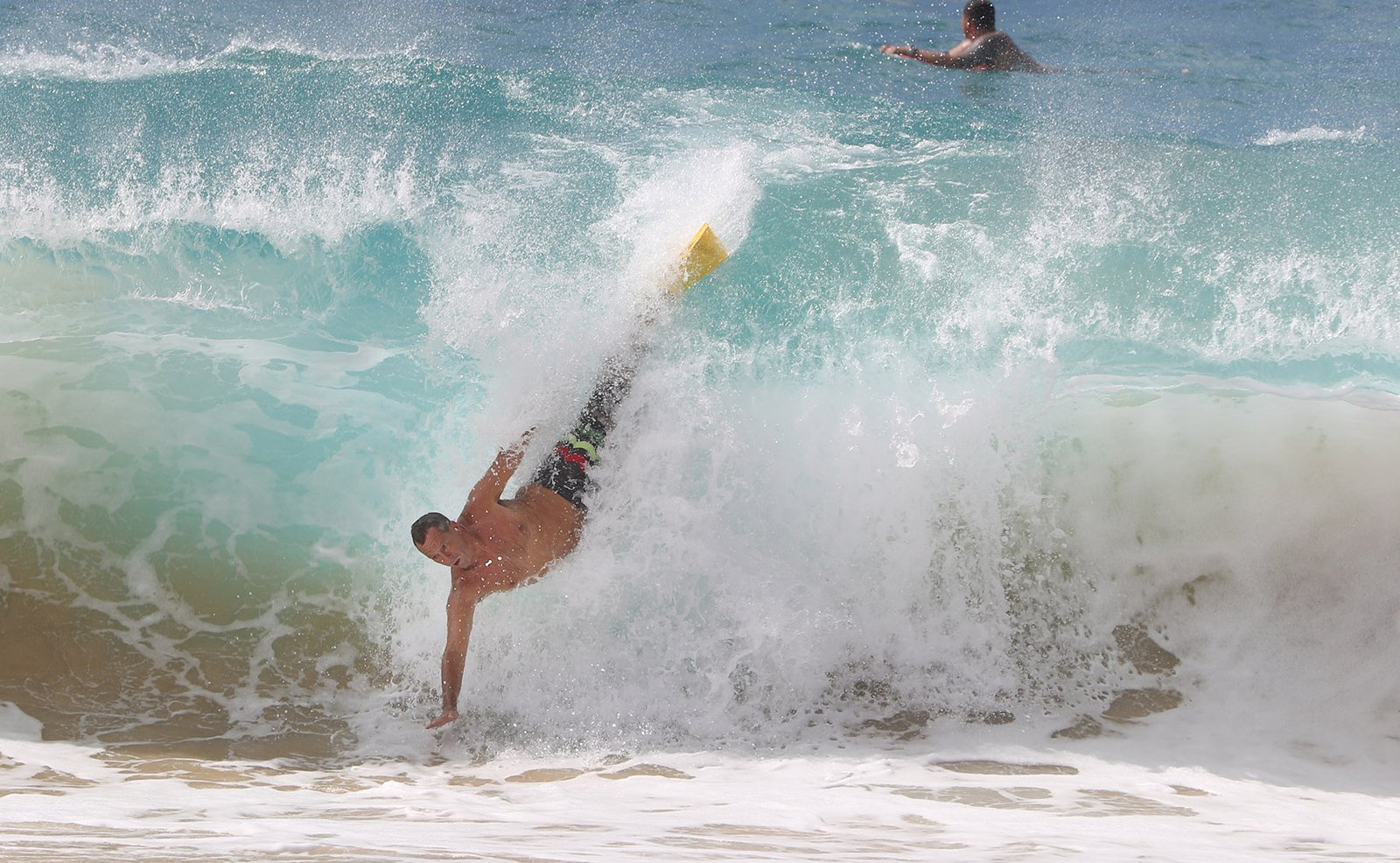I’ve been packing up my house in Waialua. We’re moving again for the fourth time in about a decade. But this time, it won’t be another to rental. It will be to the home my husband and I purchased. It’s bittersweet.
I’m sad to leave the North Shore, but after 10 years of looking, we finally gave up and are moving to central Oahu.
Finding a wheelchair-accessible home, or one that could be renovated, on an island with a massive housing shortage is difficult. To find one on the North Shore proved to be impossible.
I’m what’s known as an “ambulatory wheelchair user,” which means I can walk most days for short distances, like around the house or down the block, though it is very painful. But my genetic conditions, Ehlers-Danlos syndrome, and Alpha-1, and their many complications are progressive and degenerative. I may always be one injury or flare-up away from full-time chair use or bed rest.
Over 15 years ago, my husband and I moved with our newborn to a small split-level condo we purchased in Waialua. We loved it there, but my body started to fall apart around the same time, and I needed multiple surgeries. Then the elevator at the condo building broke so I had to climb the two flights of stairs outside and one inside our condo countless times a day. My injuries started piling up.
After a couple of fainting episodes on the stairs and a losing battle with the condo management, we sold it and rented a one-story plantation house. Soon, we told ourselves, we’d buy a home that would be better for my body and our lives.
We weren’t looking for perfect — far from it. We were looking for a single-story home that could be renovated without costing hundreds of thousands of dollars. One that would allow us to replace jalousies with windows and install double-walls if needed since air conditioning is a must for me. We needed hallways, doorways, a kitchen, and one bedroom and bathroom wide enough for my small wheelchair and room for a ramp outside the front door. And we wanted to stay in Waialua, our home, where our ohana is.

We looked off and on for 10 years before finally expanding our search. I gave up the ghost when I saw a home in my neighborhood for sale with a ramp already installed. The agent had listed it not as a wheelchair ramp but as good for someone with “an aversion to stairs.” The house wasn’t accessible inside, but the ramp would have been helpful. Are disabled people that invisible?
Our house hunting woes made me think about the broader need to accommodate people with disabilities. The need for accessible homes is expected to increase as Hawaii’s population ages, especially since so many households are multigenerational. On the neighbor islands, the need is even greater.
What To Do?
You may be familiar with the term “aging in place,” which includes the renovation of homes to allow residents to stay in it rather than move to assisted living. That is actually a segment of a larger universal design concept. The overarching goal is to design homes, businesses and public spaces so they can be enjoyed by the widest possible range of people, regardless of disabilities or access needs.
I spoke with Mililani contractor Curt Kiriu, president and owner of CK Independent Builders, about universal design, accessibility and the challenges often faced by local disabled and elderly residents.
Kiriu has long been at the forefront of accessible universal home design and remodels on Oahu. He became interested in it while he was the caregiver for his father for 17 years. Since then, he’s become an advocate for homeowners, worked with AARP and the National Association of Home Builders, and taught universal design classes to contractors, real estate agents and more.
Kiriu cleared up a misconception I had about new home construction and remodels. I’d assumed that there were accessibility standards that contractors were required to follow especially considering the fact that the Americans with Disabilities Act is 33 years old.
But the ADA does not apply to private residential homes. You’re probably not going to find an accessible home unless you remodel or build it yourself. Or if you get lucky, like I finally did when I found a home with doorways and hallways wide enough for my wheelchair.
But ask several contractors to define “accessible,” and you’ll get several different answers. And some contractors I spoke with had never heard of universal design. Unless they have taken a class like Kiriu’s, it’s just not on their radar.
Kiriu said the lack of accessible homes in Hawaii is due to “a lack of knowledge, not a lack of care.” In 2009, when he started designing accessible housing, no one had heard of aging in place or universal design.
Access needs are different for different families, he noted. My need for air conditioning and wheelchair accessibility requires other things than someone who is a little person or someone hard of hearing or deaf.
There’s also a caregiver’s health to consider. Tools like a Hoyer lift can save physical wear and tear for a caregiver responsible for transferring a wheelchair user in and out of bed. A contractor who is well versed in universal design and accessibility should be able to help design a home that works for anybody.
These changes can be especially challenging here in Hawaii, where there are many structural challenges like houses that are single-walled or use jalousie windows. Remodels can easily cost tens of thousands of dollars and require a massive amount of work.
Yesterday was a pretty bad pain day, and so I sat in my wheelchair while I emptied the dishwasher and washed veggies. I was able to do a chore that too often falls on my husband, in a way that was safe for me. It’s good to be home.
Civil Beat’s community health coverage is supported by the Atherton Family Foundation, Swayne Family Fund of Hawaii Community Foundation, the Cooke Foundation and Papa Ola Lokahi.
“Struggling To Get By” is part of our series on “Hawaii’s Changing Economy” which is supported by a grant from the Hawaii Community Foundation as part of its CHANGE Framework project.







Leave A Comment